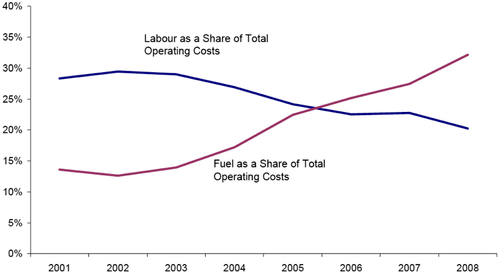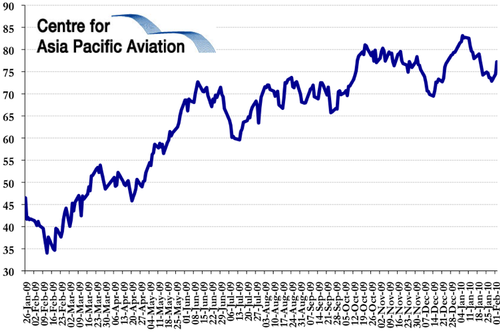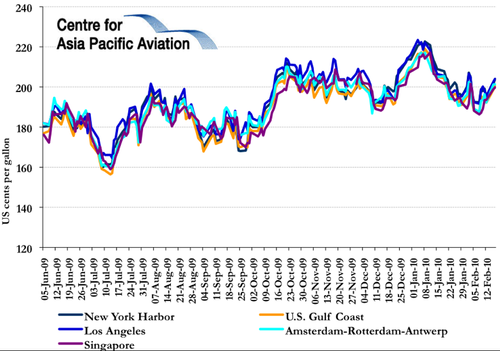IEA increases 2010 energy consumption forecast
The International Energy Agency has again marginally increases its 2010 forecast for global oil consumption, with demand from emerging economies, particularly a resurgent China, responsible for much of the increase.
The IEA expects world consumption of 86.5 million barrels of oil per day, up 170,000 per day from its Jan-2010 forecast. Chinese demand is expected to be 8.9 million barrels per day, an increase of 75,000 per day from IEA's previous forecast.
But consumption in the world's largest oil market, the US, is expected to remain flat in 2010, at approximately 18.8 million barrels per day. There is continued concern that if economic regulators in developed nations tighten fiscal and monetary policy, and governments reign in stimulus spending, the tentative economic recovery could stall.
The IEA has warned that its consumption forecast could slip by up to 400,000 barrels per day if economic activity is not as strong as expected. The agency bases its outlook on the economic forecasting of the International Monetary Fund, which recently revised its worldwide economic growth outlook from 2.8% to 3.8% for 2010.
The IEA also reported that crude oil stockpiles declined in Jan-2010, as oil production nations stick to planned production cutbacks.
Other oil forecasts have been less bullish than the IEA's recent update. OPEC expects 2010 demand of 85.1 million barrels, while the US Energy Information Administration forecasts demand would rise, but its estimates are still lower than the IEA's outlook.
US carriers' fuel bill down 38% in 2009…
US airlines account for approximately 35% of worldwide airline jet fuel consumption. They spent USD32.3 billion on fuel in 2009, paying an average price of USD189.7 cents per barrel, according to the US Air Transport Association fuel cost data for 2009.
The fuel bill for US carriers is 45% lower than 2008, helped by the fact that carriers cut their fuel consumption by 9.8% due to lower demand and reduced capacity, as well as the 38% lower average price per gallon over the year. However, in Dec-2009, the average price of jet fuel per gallon was 3.2% higher than in Dec-2008 - the first time in 2009 that the average monthly price of jet fuel topped levels in 2008.
…but fuel still the major cost for airlines
IATA is forecasting an industry fuel bill of USD123 billion in 2010, USD9 billion more than in 2009.
Based on a sample of 45 carriers, the industry body estimates that fuel represented 32.3% of total operating costs in 2008, up from 27.4% in 2007. Crude oil prices were lower in 2009 than the previous year by more than a third, pushing fuel's contribution as a proportion of total operating costs back below 30% and cutting the industry fuel bill by USD58 billion last year.
IATA oil prices: 2001-2010F
|
2001 |
2002 |
2003 |
2004 |
2005 |
2006 |
2007 |
2008 |
2009F |
2010F |
|
|---|---|---|---|---|---|---|---|---|---|---|
|
Fuel expenses (USD billion) |
43 |
40 |
44 |
65 |
91 |
107 |
134 |
172 |
114 |
123 |
|
% of expenses |
13% |
13% |
14% |
17% |
22% |
24% |
27% |
32% |
25% |
26% |
|
Price (Brent, USD per barrel) |
24.7 |
25.1 |
28.8 |
38.3 |
54.5 |
65.1 |
73.0 |
99.0 |
61.8 |
75.0 |
Fuel as a percentage of airline costs doubled between the beginning and the end of the decade, rising from around 14% of total costs in 2001. Fuel topped labour as the major operating cost in 2005, when oil averaged USD54.5 per barrel and airlines spent USD91 billion on fuel.
Fuel and labour cost shares for major airlines, global average
LCCs suffer more from higher fuel costs than their full service counterparts. Airbus estimates that fuel accounts for up to 60% of operating costs for LCCs in the Asia Pacific region, compared to 40% for full service airlines in the same region.
Oil lingers below USD80 per barrel
Oil on the NYMEX closed the week ending 17-Feb-2010 at USD77.27 per barrel, an increase of 4.8% over the previous end of week price. Crude prices are 121% higher than they were this time 12 months ago.
WTI spot price: Jan-2009 to Dec-2009
Jet fuel prices (cents per gallon) have generally returned to above the USD 200 cents per barrel mark, with New York Harbour, US Gulf Coast and Los Angeles prices up 2.6%, 2.7% and 28% respectively. Amsterdam prices finished higher as well, up 4.2%.
Singapore prices remain just below USD200 cents, but are rising fast, jumping 6.7% during the week.
Daily jet fuel prices (kerosene, cents per gallon) at New York, US Gulf Coast, Los Angeles, Amsterdam, Singapore: Jun-2009 to Feb-2010
Daily jet fuel prices (kerosene, cents per gallon) at New York, US Gulf Coast, Los Angeles, Amsterdam, Singapore vs Crude Spot price (WTI, USD per barrel): 09-Feb-2010 to 17-Feb-2010
|
09-Feb-10 |
10-Feb-10 |
11-Feb-10 |
12-Feb-10 |
16-Feb-10 |
17-Feb-10 |
one week Change |
12 month Change |
|
|---|---|---|---|---|---|---|---|---|
|
New York Harbor |
198.9 |
197.97 |
199.09 |
194.67 |
201.63 |
204.02 |
2.6% |
69.1% |
|
U.S. Gulf Coast |
195.4 |
194.47 |
195.59 |
192.17 |
198.63 |
200.77 |
2.7% |
72.9% |
|
Los Angeles |
198.4 |
200.22 |
198.09 |
195.42 |
202.63 |
204.02 |
2.8% |
70.5% |
|
193.15 |
193.45 |
196.32 |
192.24 |
201.23 |
201.31 |
4.2% |
66.6% |
|
|
187.14 |
189.05 |
193.45 |
193.57 |
199.76 |
6.7% |
58.5% |
||
|
WTI Spot* |
73.71 |
74.48 |
75.23 |
74.11 |
76.98 |
77.27 |
4.8% |
121.0% |


